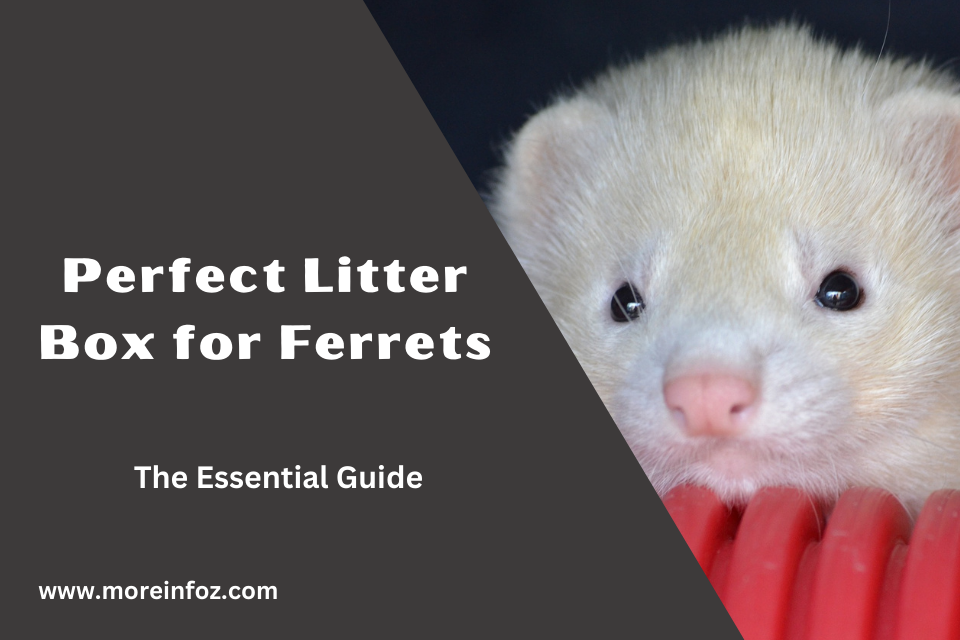Are you a proud ferret owner looking to provide your furry friend with the perfect litter box? A properly designed litter box plays a crucial role in maintaining cleanliness and promoting good hygiene for your ferret. In this comprehensive guide, we will explore the key factors to consider when choosing a litter box for ferrets and provide essential tips for creating a clean and happy environment.
1. Size and Shape
When selecting a litter box for your ferret, size matters. Ferrets require ample space to comfortably eliminate waste. Opt for a litter box that allows your ferret to move around easily and assume a natural posture while using it. A rectangular or square-shaped litter box with low sides works best, as it allows easy access for your ferret.
2. Material and Durability
Investing in a litter box made from durable and non-toxic materials is vital. Ferrets have a natural tendency to explore and may chew on their surroundings, so ensure the litter box is made of safe materials such as high-quality plastic or stainless steel. Avoid using litter boxes made of wood or materials that can absorb odors and stains.
3. Litter Substrate
Selecting the appropriate litter substrate is crucial for your ferret’s litter box. Avoid clumping cat litters, as ferrets may ingest the litter while grooming themselves, which can lead to serious health issues. Instead, opt for a dust-free, paper-based litter or pellet-style litter specifically designed for ferrets. These substrates are safer and reduce the risk of respiratory problems.
4. Placement and Accessibility:
Proper placement of the litter box is essential for encouraging your ferret to use it consistently. Choose a quiet and easily accessible area, away from their food and sleeping areas. Ferrets prefer privacy while using the litter box, so consider placing it in a secluded corner or using a litter box with a removable lid for added privacy.
5. Cleaning and Maintenance:
Maintaining a clean litter box is crucial to prevent odors and promote good hygiene for your ferret. Regularly scoop out solid waste and soiled litter, ideally on a daily basis. Replace the litter entirely every one to two weeks, ensuring you thoroughly clean the litter box with pet-safe disinfectants. Maintaining cleanliness will help prevent your ferret from developing litter box aversion.
6. Training and Reinforcement:
Introducing your ferret to the litter box and training them to use it is a vital step. Initially, confine your ferret to a small area with the litter box, gradually expanding their space as they become accustomed to using it. Reward your ferret with treats or praise when they successfully use the litter box, reinforcing positive behavior.
Conclusion
Providing a suitable litter box for your ferret is essential for their overall well-being and hygiene. By considering the size, shape, material, and appropriate litter substrate, you can create a clean and comfortable environment for your ferret. Remember to place the litter box in a convenient location, maintain regular cleaning and maintenance, and reinforce positive litter box behavior through training. With these tips in mind, you can ensure a happy and healthy experience for both you and your furry friend.
Remember, a happy ferret starts with a well-chosen litter box!
Note: The above article is a general guide and not intended to replace professional veterinary advice. Always consult with a veterinarian for specific recommendations tailored to your ferret’s needs.

FAQs about Ferret Litter Boxes
- Q: Why is a litter box important for my ferret? A: A litter box provides a designated area for your ferret to eliminate waste, promoting cleanliness and hygiene in their living space.
- Q: What size litter box should I choose for my ferret? A: Opt for a litter box that allows your ferret to move comfortably and assume a natural posture while using it. A rectangular or square-shaped box with low sides is ideal.
- Q: What type of litter substrate should I use for my ferret? A: It’s recommended to avoid clumping cat litters as ferrets may ingest them. Instead, opt for dust-free, paper-based litter or pellet-style litter specifically designed for ferrets.
- Q: How often should I clean my ferret’s litter box? A: Scoop out solid waste and soiled litter daily. Replace the litter entirely every one to two weeks and thoroughly clean the litter box using pet-safe disinfectants.
- Q: Where should I place the litter box for my ferret? A: Choose a quiet and easily accessible area, away from their food and sleeping areas. Consider placing it in a secluded corner or using a litter box with a removable lid for added privacy.
- Q: Can I use a litter box designed for cats for my ferret? A: While cat litter boxes can work, it’s important to ensure they are of an appropriate size and shape for your ferret’s comfort and accessibility.
- Q: How can I train my ferret to use the litter box? A: Introduce your ferret to the litter box gradually, confining them to a small area with the box initially. Use positive reinforcement, such as treats and praise, when they successfully use it.
- Q: What if my ferret refuses to use the litter box? A: If your ferret is not using the litter box, it may indicate a preference for a different litter substrate or an underlying health issue. Consult with a veterinarian for guidance.
- Q: Can I use scented litter or deodorizers in the litter box? A: It’s generally recommended to avoid scented litter or deodorizers as ferrets have sensitive respiratory systems. Stick to unscented litter to minimize potential respiratory problems.
- Q: How many litter boxes should I have for multiple ferrets? A: It’s advisable to have at least one litter box per ferret, plus an extra box to ensure easy access and prevent litter box conflicts among multiple ferrets.





